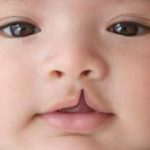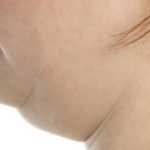What is a hairline lowering?
Hairline lowering is a plastic surgery procedure that reduces the forehead and allows the hairline to be lowered for a maximum of 2 to 3 cm.
My technique allows an advancement of the frontal line without hair transplants. The degree of advancement of the hair is determined by the will of the patient and by the laxity and flexibility of the scalp
Scalp advancement surgery is a useful procedure for facial rejuvenation with almost immediate results in a single operation.
The results are very satisfactory.
Long faces are often concerned with a large forehead.
The reduction of the forehead by lowering the forehead line makes it possible to treat curved foreheads because the lowered hair will cover the upper part of the forehead.
What are the goals of forehead reduction ?
This procedure can reduce the height of the forehead, lower the hairline to treat a forehead that is too tall, too big or a bulging forehead.
If the elasticity of the scalp is satisfactory, scalp advancement surgery will give you :
- A faster hair restoration result than hair transplants, which require a multi-step treatment and a growth time of about six months before obtaining a satisfactory result.
- An almost invisible scar a few months after surgery.
Who is forehead reduction for?
For all patients who:
- Have too much forehead height
- Have baldness or frontal hair loss
- Are complexed by a forehead that is too high
- Always style their hair forward to conceal the height of the forehead
- Have a domed forehead or a large forehead with a prominent frontal bone.
What is the procedure for forehead reduction surgery ?
Before procedure
- Two (2) cosmetic surgery medical consultations to analyze your face and plan your forehead reduction
- An anesthesia consultation
- A preoperative assessment
- Smoking cessation
Process of the operation
The operation is performed under general anesthesia in the operating room.
This cosmetic surgery procedure lasts approximately one hour.
It consists of :
- Removing the upper part of the forehead skin that does not contain hair
- Transferring the scalp forward to replace an area without hair with an area that contains hair.
- This reduces the height of the forehead and lowers the scalp.
- There is no need for a hair donor area like for hair transplantation.
- To reduce the height of the forehead, the reference technique is the scalp advancement flap.
Who’s a good candidate for forehead reduction surgery?
Forehead reduction surgery can be used to balance the proportions of one’s overall face structure. You may benefit from forehead reduction surgery if you have:
- a high hairline and want to lower your hairline
- a large forehead and want to shorten your forehead
- thick hair that’s disproportionate to the height of your hairline
- low or heavy eyebrows and want to change the proportions of your face
- recently had a hair grafting procedure and wish to increase your hairline
- recently had a brow lift procedure and wish to bring your hairline forward
However, even with these criteria, not everyone is a suitable candidate for forehead reduction surgery.
In order to have a successful forehead reduction surgery, you must first have good scalp laxity (the ability of the scalp tissues to stretch). If you have a family history of pattern balding, forehead reduction surgery may not be right for you.
If you have any other medical conditions that would place you at risk for surgery complications, you should discuss these with your doctor before moving forward
What are the potential risks and side effects?
All surgical procedures come with risks. The risks of forehead reduction surgery include:
- bleeding during and after surgery
- side effects of general anesthesia
- allergy to general or local anesthesia
- infection of the incision area
- nerve damage where the incision was made
- paresthesia at the surgical site
- hair loss where the hairline was cut
- scarring after the incision heals
For most people, the benefits of forehead reduction surgery outweigh the risks. If the surgery is performed by an experienced, skilled professional, the risk of a visible scar and long-term effects is minimum.
REASONS TO HAVE FOREHEAD REDUCTION IN IRAN
There are countless reasons why Iran is a perfect place for your forehead reduction surgery. Here, we provide you with three:
- Highly experienced surgeons
Iran is ranked among the top 10 countries of the world in terms of the number of various cosmetic surgeries performed.
What sets this country apart from other countries is the great number of plastic surgeons with ample experience who mainly focus on their patients’ satisfaction. Having attended the prestigious medical universities of Iran, USA or UK, Iranian surgeons conduct the most complicated surgeries in the world.
- Modern hospitals and clinics at par with global standards
Despite what you may think of Iran’s healthcare system including the quality of hospitals and medical facilities, the country is well equipped with modern private hospitals and first-class facilities. Walking into a private hospital in Iran, you will feel like you’ve stepped into a luxury hotel rather than a hospital.
There are also various clinics specialized in the hairline correction in Iran. With professional staff giving consultations to potential candidates and giving them available options and even the alternatives for hairline correction surgeries, Iranian cosmetic clinics in major cities like Tehran, Mashhad, Shiraz, etc. are prepared to offer hairline lowering services to foreign patients.
- Affordable price
If you knew that you could get your forehead reduction done in another country with the same quality but considerably lower price, would you go for that?
In Iran, medical/cosmetic procedures are 50%-70% cheaper than what you would pay in other countries. This is because the Iranian currency is weaker and the labor cost is lower as well.
The average monthly salary of a nurse is around $3,000 to $8,000 in countries like the UK and US. However, an Iranian nurse monthly receives $800 to $1,500. Iranian doctors earn around $10,000 per month, while American doctors receive $18,000 per month. This is while doctors in Iran are high earners, meaning that other workforce like hotel and restaurant owners who benefit from a patient traveling to Iran earn much lower. That is why this country comes up with surprisingly affordable prices.






























